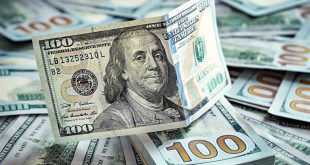After an intense week across most financial markets, volatility is unlikely to ease soon. Market participants will continue to digest the latest round of US inflation data, particularly the CPI and PPI data, with a special focus on the upcoming FOMC meetings. The Fed enters its blackout period ahead of the July 25-26 meeting. Next week, inflation data from Japan, New Zealand, and the UK is due along with US June Retail Sales and Australian jobs data.
Most currencies have been interactive and especially sensitive to last week’s key data. The US Dollar, measured by the DXY, suffered its worst weekly loss since November of last year, falling below 100.00, to the lowest since April 2022. The dollar remains vulnerable in the context of risk appetite and lower Treasury yields. The dollar only improved post University of Michigan’s consumer sentiment reading on Thursday.
US bonds rallied during the week on signals from the US Consumer Price Index (CPI) and the Producer Price Index (PPI) of slowing price pressures. The US 10-year yield dropped to 3.80%, after hitting last week a multi-month high above 4%; the 2-year yield ended a five-week upside run, retreating to 4.70%%. Wall Street cheered the latest inflation numbers and the fact that the next rate hike from the Fed in July could be the last one. US stocks rose more than 2% during the week. Commodities also climbed significantly.
Expectations for another Fed rate hike after July have softened. However, for the September meeting, there will be two more inflation reports, so there is still a long way to go. The most relevant report in the US economic calendar next week is June Retail Sales. Markets won’t be hearing from Fed officials as they enter the blackout period ahead of the July 27-28 meeting. The debate is centered on what the Fed will do after July. At this point, the Fed has not provided clear indications of what its next moves will be.
EUR/USD rose above the 200-week Simple Moving Average (SMA) for the first time in more than a year, and closed above 1.1800, having the best weekly performance since November 2022.
US Inflation-Linked Worries
Signs of disinflation in the US and a high level of scepticism about the ability of the Fed to hike rates beyond the July meeting, suggest that a soft USD is likely to prevail in the near-term. That said, signs that the ECB’s rate hike cycle is moving towards its peak suggests that EUR/USD could struggle to make further gains beyond the summer season.
The GBP/USD pair also rose above the 200-week SMA and also broke 1.3100. The positive momentum will be challenged next week with key data from the UK that includes on Wednesday, the Consumer Price Index (CPI) for June, with a decline expected in the annual rate from 2.1% to 1.9% and the Core seen holding at 1.8%. Later on Friday, the June Retail Sales report is due.
Inflation proved to be more stubborn than expected also in May, whereupon the BoE surprisingly raised its key interest rate by 50 bp. The market now expects a much longer rate hike cycle, which should support the pound in the short term. We have therefore adjusted our forecast. In the medium term, however, we continue to see a weaker pound, as the BoE is likely to act too hesitantly overall.
USD/JPY dropped for the second week in a row and found support above 137.00, on the 20 and 55-week SMA. The yen rose sharply versus the dollar but posted mixed results versus its other rivals as the positive impact from lower yields was offset by risk appetite. The divergence between the Bank of Japan and other central banks remains present, even as the tightening cycle becomes closer. Japan will release the Consumer Price Index on Friday, with the annual rate expected to remain at 0.2% from a year earlier.
Key Interest Rate Decisions, BoC, RBNZ
The Canadian Dollar also traded higher after the BoC raised interest rates by 0.25%, bringing the overnight rate to 5.0% at its meeting on Wednesday. Governor Tiff Macklem stressed future policy decisions would be dependent on incoming data, leaving markets unclear on whether this would be the BoC’s last hike in the tightening cycle.
The USD/CAD pair rebounded sharply on Friday, trimming weekly losses and retaking 1.3200. The Bank of Canada hiked interest rates to 5.0%, its highest level in 11 years. Canada will report inflation data next Tuesday and Retail Sales on Friday.
AUD/USD broke its range, surpassing 0.6700 and jumped to test the 0.6900 area and June highs. It holds a bullish tone. The Reserve Bank of Australia (RBA) will release the minutes of its latest meeting on Tuesday. Australia will release employment data on Thursday.
NZD/USD broke the resistance area at 0.6300 and briefly reached levels above 0.6400, and then pulled back modestly. As expected, the Reserve Bank of New Zealand (RBNZ) kept interest rates unchanged at 5.5%. On Wednesday, New Zealand will release inflation data, with a slowdown in the annual rate expected from 6.7% to 5.9%.
New Zealand’s central bank paused its interest rate rises for the first time since October 2021 amid easing inflation and a sputtering economy. The Reserve Bank of New Zealand’s seven-member monetary policy committee kept the official cash rate unchanged at 5.5% today (July 12), the highest level since December 2008. The decision comes after the central bank raised rates by a total of 525 basis points in 12 consecutive meetings to curb inflation – the most aggressive tightening cycle.
The Chinese Yuan recovered with USD/CNH falling from 7.22 to 7.11. Data continues to point to weak domestic demand. China will report Q2 GDP on Monday.
Optimism that the Fed will soon end the tightening cycle boosted emerging market and higher beta currencies. USD/MXN posted its first weekly close under 17.00 since November 2015. The Mexican peso continues to be among the top performers so far during 2023.
The Swedish Krona and the South African Rand were the top performers during the week. USD/ZAR bottomed at 17.90, the lowest since April, while USD/SEK tumbled from 10.800 to 10.180, slightly above YTD lows. The Chilean Peso lagged and failed to rise versus the US Dollar.
Buying Silver was the best trade of the week with XAG/USD gaining more than 8% during the week. Gold rose from $1,925 to $1,960, and benefited from the dollar’s bad week.
 Noor Trends News, Technical Analysis, Educational Tools and Recommendations
Noor Trends News, Technical Analysis, Educational Tools and Recommendations





